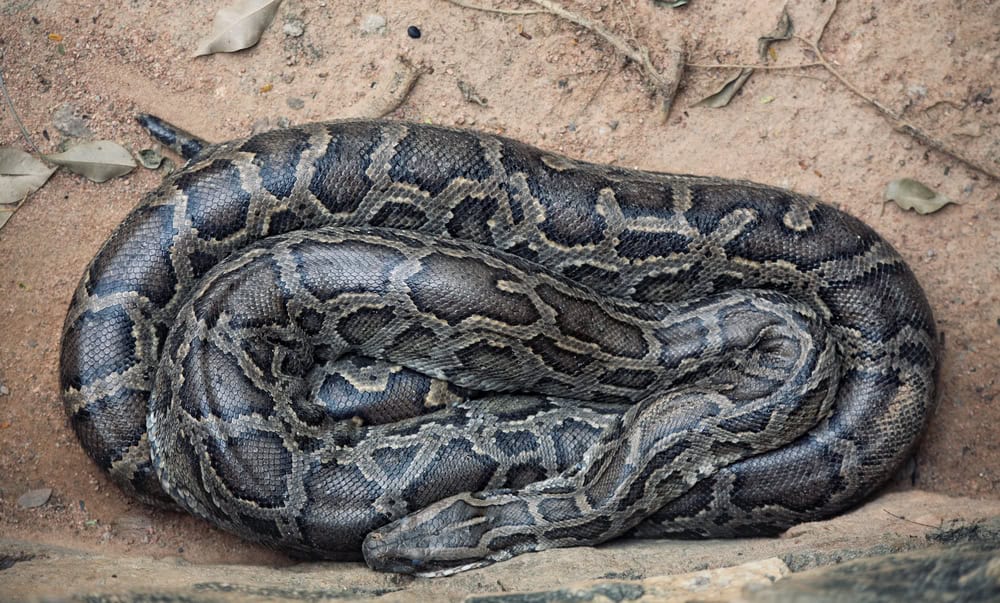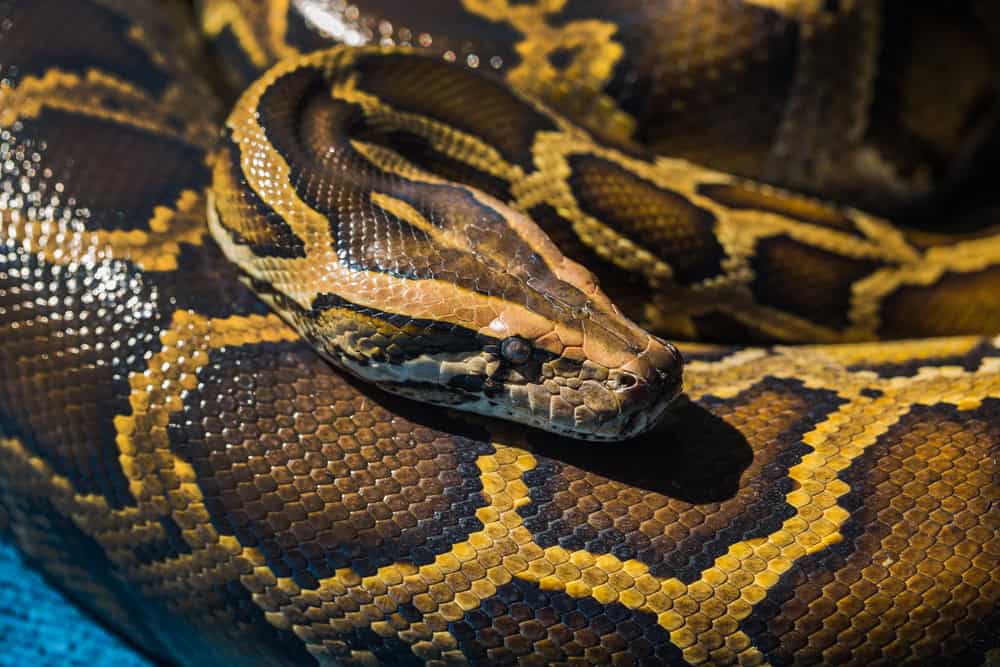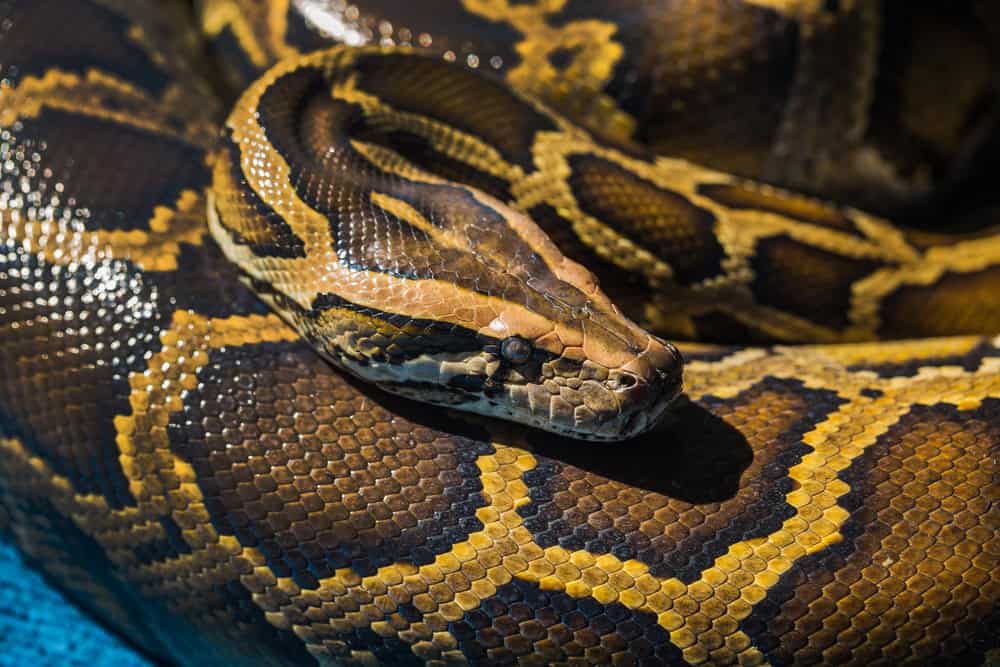In recent years, the state of Florida has become synonymous with stories of giant Burmese pythons lurking in its swamps. These snakes, which are nonnative to the region, have carved out a headline-worthy niche in the state’s wildlife stories. The capture of the largest python ever found in Florida is both a tale of ecological impact and human determination. This gigantic reptile is emblematic of the ongoing battle between invasive species and natural habitats, providing fascinating insights into the challenges the ecosystem faces.
The Discovery Timeline

The discovery of the largest python ever caught in Florida took place in the heart of the state’s sprawling Everglades. This impressive snake was captured by a team of researchers and wildlife experts determined to control the population of these invasive reptiles. Measuring an astounding 18 feet in length and tipping the scales at around 215 pounds, this python was a record-breaker. Details of the feat quickly captured public imagination, highlighting both its significance and the broader implications for Florida’s ecosystem.
Understanding the Burmese Python

Burmese pythons, native to Southeast Asia, are known for their impressive size and strength. They are among the largest snake species in the world, capable of reaching lengths exceeding 20 feet. In their native habitat, these snakes play a crucial role in controlling the populations of their prey. However, when introduced to regions like Florida, where natural predators are few, their population can grow unchecked, posing significant threats to local wildlife.
The Introduction to Florida’s Ecosystem

The presence of Burmese pythons in Florida is largely attributed to the exotic pet trade. When these snakes grew too large for their owners to handle, many were released into the wilds of the Everglades. Over the years, these pythons have established a robust breeding population in South Florida. Their presence has led to dramatic declines in native mammal and bird populations, earning them a spot as a top predator in the region.
Ecological Impact on the Everglades

Florida’s Everglades, a diverse and fragile ecosystem, have been significantly impacted by the growing population of Burmese pythons. These snakes, with no natural predators in the area, prey on a wide array of native species, from rabbits and raccoons to deer and even alligators. This predation has disrupted local food chains, threatening the balance of the ecosystem.
The Challenges of Python Management

Managing the burgeoning population of Burmese pythons in Florida poses a formidable challenge for wildlife experts. Various strategies have been employed, including organized hunts, research initiatives, and community engagement efforts. However, the snake’s stealthy nature and remote habitat make complete eradication unlikely. Instead, efforts focus on population control and minimizing ecological impacts.
Research and Monitoring Efforts

Researchers are continuously developing and testing new methods to monitor and control populations of Burmese pythons. Technological advancements, such as GPS tracking and radio telemetry, allow researchers to study the movements and behaviors of these elusive snakes. Such research is crucial for devising effective management strategies and mitigating the ecological disruptions caused by the pythons.
Public Involvement and Education

Public engagement plays a vital role in managing Florida’s python problem. Wildlife organizations and state authorities have launched educational campaigns to inform residents and visitors about the presence of these snakes and the importance of reporting sightings. Involving the public not only aids in surveillance but also fosters a community-driven approach to managing the issue.
Legal and Regulatory Measures

In response to the growing threat posed by Burmese pythons, Florida has implemented several legal measures to curb their expansion. These include restrictions on the ownership and trade of these snakes and incentivized removal programs. Such regulations aim to limit the release of captive snakes into the wild, tackling the problem from its source.
Innovative Control Techniques

Innovation has been key in Florida’s approach to controlling the python population. Techniques such as python-sniffing dogs and thermal imaging cameras have been introduced to aid in detection and capture efforts. These innovations represent the intersection of technology and wildlife management, offering hope for more effective control methods in the future.
The Role of Community in Conservation Efforts

Community engagement is essential in the ongoing battle against invasive species like the Burmese python. Local residents, recreational hunters, and conservation groups are often on the front lines, providing essential data on python sightings and participating in organized removal events. Their involvement is crucial in making management efforts more effective and sustainable.
Lessons for Invasive Species Management

The story of the largest python ever caught in Florida serves as a poignant reminder of the challenges posed by invasive species worldwide. It highlights the importance of proactive measures, continuous research, and community involvement in managing such threats. Learning from Florida’s experience can guide future responses to similar ecological challenges, ensuring that local ecosystems are preserved and protected for generations to come.
Conclusion: A Cautionary Tale of Human Impact

The capture of the largest python in Florida is more than just a headline—it is a cautionary tale about the unintended consequences of human actions on nature. As Florida continues its efforts to manage the Burmese python invasion, this story remains a compelling example of the delicate balance between human activity and ecological preservation. By understanding and addressing the implications of such invasive species, we can work towards a more harmonious coexistence with the natural world.
- The Story of America’s Last Wild Horses - August 19, 2025
- This Animal Can Regrow Its Entire Brain – Scientists Are Stunned! - August 19, 2025
- The Way Dolphins Play With Bubbles Will Melt You - August 19, 2025

